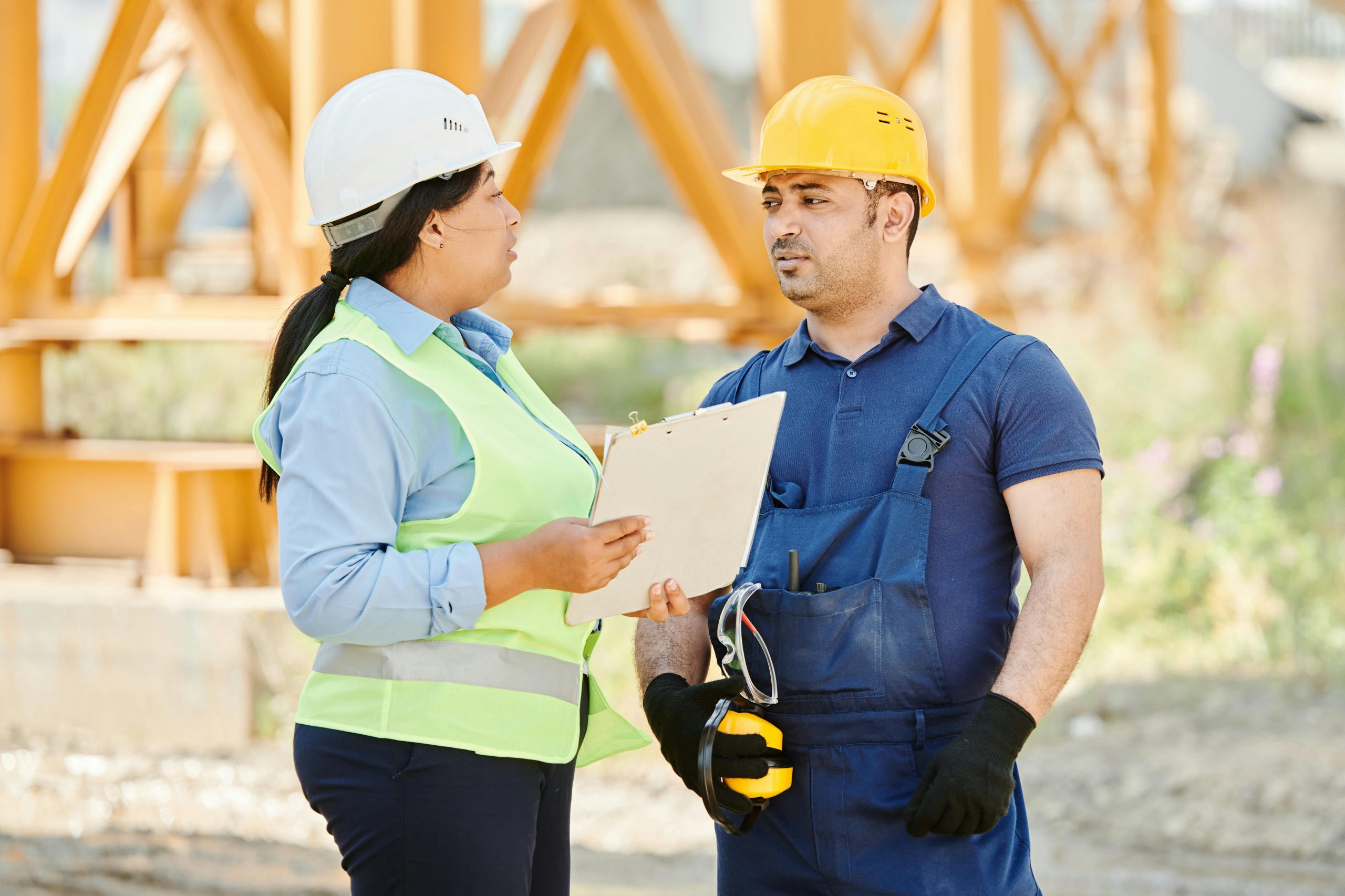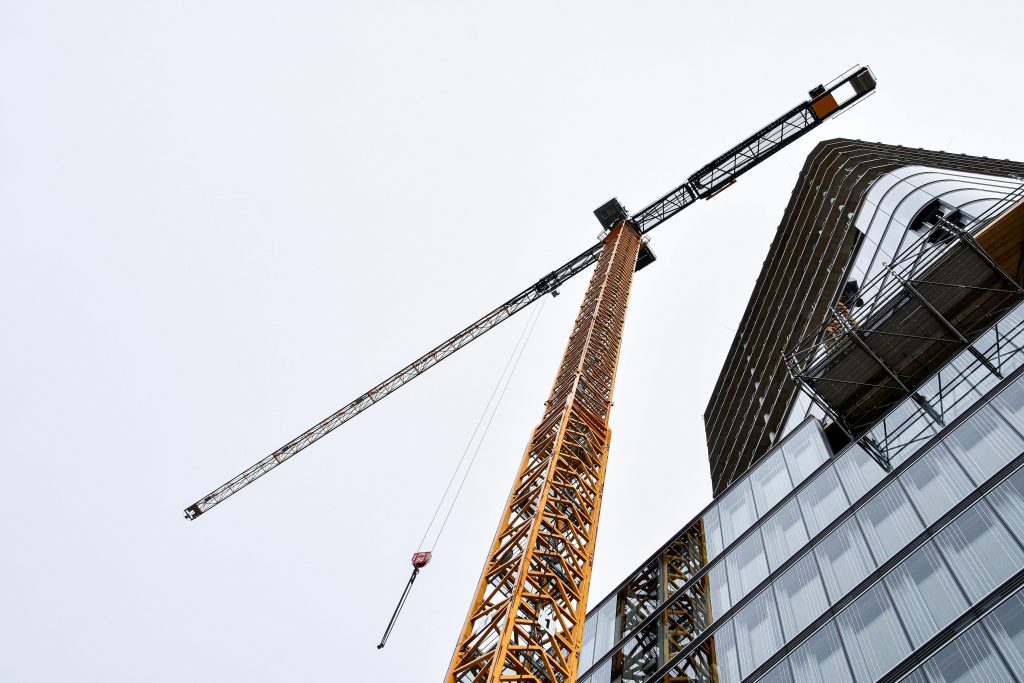- Define what needs lifting, its size, weight, and placement specs. This helps your crane partner recommend the right equipment and provide accurate estimates.
- Choose a crane rental service with transparent pricing, upfront quotes, and site assessments to ensure cost control and reliable planning from day one.
- Ground stability, access, overhead hazards, and congestion all affect crane selection, safety, and pricing—never skip this step.
- A well-prepared lift plan includes crane specs, rigging methods, personnel roles, communication, and weather protocols—essential for smooth, safe execution.
- Budget for all lift-related expenses and schedule smartly. Include buffers for weather or delivery delays, and confirm standby/cancellation terms with your crane partner.
In any major construction project—whether it’s erecting steel framing, installing rooftop HVAC systems, or placing large precast panels—heavy lifting is more than a single task; it’s a logistical and safety-intensive operation. These lifts often require specialized equipment, trained personnel, strict coordination, and compliance with rigorous safety regulations. A minor oversight can delay timelines, inflate costs, or cause serious accidents.
Here’s a detailed guide to help you plan every phase of a construction project that involves heavy lifting, complete with tips on creating efficient lift schedules and keeping costs—and risks—under control.
1. Identify and Define Your Heavy Lifting Requirements
Start with a clear understanding of what needs to be lifted, where, and when. The more accurate you are with your load and lift specs, the more reliable your crane estimate will be.
Questions to ask in the planning stage:
- What will be lifted? Structural steel beams, mechanical units, precast panels, rooftop chillers, or large generators?
- What are the dimensions and weight of each object? This determines crane capacity.
- How many lifts are required? One-off pick or repetitive lifting?
- Where are the pick-up and drop-off points? Horizontal and vertical distances influence the required boom length and setup.
- What’s the lift sequence? Is it a single-day lift or a multi-phase schedule across weeks?
A crane provider offering detailed pricing will usually ask for this information when preparing an estimate. Being ready with specifics improves cost accuracy and avoids overpaying for equipment that’s too large—or delays from a crane that’s too small.
2. Conduct a Thorough Site Assessment

Your job site conditions can significantly impact the feasibility and cost of a lifting operation. Always review accessibility, safety concerns, and logistical challenges early—before bringing in equipment.
Site elements that affect crane setup and pricing:
- Ground Conditions
- Is the soil compacted and stable?
- Will crane mats or outrigger pads be needed for stabilization?
- Access Points
- Are there wide and level roads for crane delivery?
- Is there sufficient room for a large crane to be assembled and maneuvered?
- Overhead and Underground Hazards
- Watch for power lines, building overhangs, or tree branches.
- Mark any buried utilities near the crane pad location.
- Site Congestion
- Will other trades, equipment, or materials interfere with crane operation?
- Public Impact
- Will streets or sidewalks need to be closed temporarily?
A crane service that provides cost estimates may offer a site visit before finalizing their quote. This visit ensures the crane size and configuration are appropriate for the conditions and avoids last-minute change orders or extra mobilization costs.
3. Choose the Right Type of Crane for the Job
Different jobs require different cranes. Selecting the wrong equipment—too small or too large—can cause delays, safety issues, or wasted budget.
Common crane types and their ideal uses:
- Mobile Hydraulic Cranes
- Fast setup, suitable for one-day urban jobs
- Capacities range from 30 to 500+ tons
- Great for HVAC placement and mid-rise steel erection
- Crawler Cranes
- High capacity and very stable; ideal for long-term or heavy-duty jobs
- Moves on tracks, requires more space and setup time
- Rough Terrain Cranes
- Built for off-road and uneven ground
- Compact body with high maneuverability
- Tower Cranes
- Essential for high-rise and tight downtown projects
- Often erected on-site and remain for months
When working with a crane company, make sure their quote includes:
- Crane type and specs
- Operator and crew costs
- Fuel or power requirements
- Setup and takedown time
- Optional add-ons like rigging gear or spreader bars
4. Plan for Permits, Insurance, and Regulatory Compliance
Heavy lifting operations are closely monitored by regulatory agencies—and for good reason. A failure to comply with legal requirements can shut down your site, void insurance, or result in steep fines.
What you’ll need:
- Municipal Crane Permits
- For public space use, street closures, sidewalk blocks, or air rights over sidewalks/buildings.
- Oversize Load Transport Permits
- If the crane or load is transported as a wide or heavy load on public roads.
- Crane Operator Credentials
- All operators must be licensed and often OSHA/NCCCO certified.
- Lift Plans and Safety Reports
- Sometimes required for complex or critical lifts.
- Liability Insurance
- Confirm your crane partner has comprehensive insurance and will name your project in the coverage.
Ask your crane company whether permit acquisition and documentation support is included in the scope of service or offered as an add-on. Some providers help file the paperwork for you.
5. Develop a Detailed Lift Plan
A lift plan is your operations roadmap. It’s critical for safety, crew coordination, and timing. It should be reviewed and approved by all key stakeholders—GC, crane operator, safety officer, and riggers.
A strong lift plan includes:
- Crane specifications
- Model, capacity, boom length, and required counterweights
- Load data
- Weight, dimensions, rigging requirements
- Rigging gear specifications
- Slings, shackles, spreader beams, and lifting attachments
- Personnel and communication
- Signal person, lift director, backup radio contact protocols
- Weather protocols
- Max wind speeds, storm delays, and temperature limits
- Lift sequence and schedule
- Timeline broken into set-up, lift, hold, and release
Crucially, a crane rental service with upfront quotes may include a lift plan in their scope—especially for complicated picks or high-risk sites. Ask if engineering review or stamped drawings are available.
6. Budget Carefully and Confirm All Costs
A crane lift can cost anywhere from a few hundred dollars for a quick mobile lift to tens of thousands for multi-day projects with large equipment and complex logistics.
Key cost drivers:
- Crane type and size – Larger cranes cost more per hour and require more prep
- Rental duration – Is it a 4-hour minimum, full-day, or weekly rate?
- Crew costs – Operators, riggers, and signal people
- Mobilization fees – Transporting the crane to and from site
- Permitting and traffic control – Included or billed separately?
- Weather delays – Will there be standby fees?
A crane company that offers transparent pricing should give you a quote that breaks these down clearly. Ask for:
- Line-item pricing
- Overtime rates
- Cancellation/rescheduling policy
- Terms for standby time
Also, ask for multiple quote scenarios:
- Single-day lift vs. staged over two days
- Using different crane types
- Including/excluding rigging crew
Getting several quote variations from a crane service that provides cost estimates can help align with project phasing and budget approvals.
7. Schedule with Precision and Build in Flexibility
Crane operations don’t exist in a vacuum—they must be coordinated with deliveries, trades, and weather. Poor planning here leads to downtime and added costs.
Smart scheduling practices:
- Time the lift around deliveries – Don’t have your crane waiting on a truck
- Notify other trades – They may need to clear space or avoid the zone
- Check the weather forecast – High winds or storms can halt lifting
- Create a backup date – Include a buffer in case of delays
- Lock in permits early – Some cities require 1–2 weeks lead time
Discuss scheduling contingencies with your crane company to understand their policies on rebooking, standby, or split-day rates.
8. Vet Your Crane Provider Thoroughly
Hiring the wrong crane service is not just inconvenient—it can be dangerous. Vet your provider as seriously as you would a structural subcontractor.
What to look for:
- Documented safety history – Request EMR scores or OSHA records
- Certified operators and crew – Must meet local/state licensing standards
- Experience with similar lifts – Ask for case studies or references
- Equipment age and maintenance logs – Reliable gear reduces breakdown risks
- Responsive customer service – You need fast answers on busy job sites
And, of course, confirm that you’re working with a crane company that offers estimates upfront, not one that gives verbal ballpark figures or adds hidden costs after the job starts.
9. Lift Day Execution: Stay Sharp and Safe
Once everything is in place, execution becomes the priority. Everyone on-site should be prepared and aware of their roles.
Lift day checklist:
- Crane arrives on-site and is inspected by the lift director
- Ground conditions are rechecked; mats placed if needed
- Load is rigged per lift plan and inspected by certified rigger
- Safety meeting conducted with full crew
- All communication tools are tested (radios, hand signals)
- Weather conditions confirmed within safe parameters
- Lift executed according to sequence and pace outlined
Make sure your crane company assigns a foreman or supervisor to oversee their side of the operation. Documentation of the lift is also helpful for insurance and recordkeeping.
10. Conduct a Post-Lift Debrief and Project Review
Once the equipment is safely removed and the area cleared, take time to reflect on what went well—and what could be improved.
Topics to review:
- Did the crane perform as expected?
- Were all lifts completed safely and on time?
- Were costs in line with the original estimate?
- Was communication effective among all parties?
- What would you do differently on the next project?
Ask your crane service for a usage report or lift summary if one is available. This information can help you refine processes and strengthen your internal documentation for future projects.
In Closing
Heavy lifting in construction demands foresight, technical planning, and the right partners. By defining your scope clearly, conducting a site assessment, selecting the correct crane, developing a lift plan, and budgeting carefully, you can ensure safety and success.

